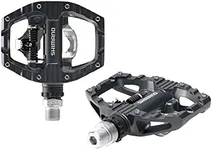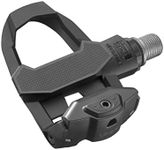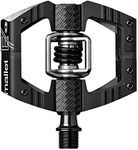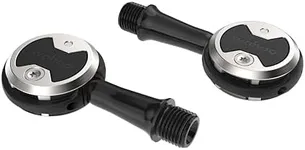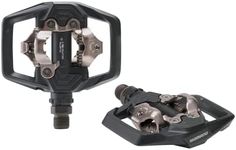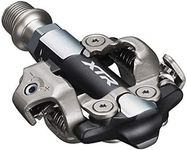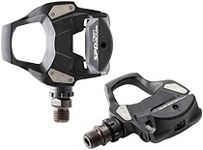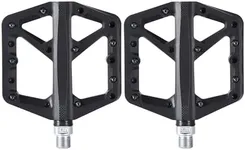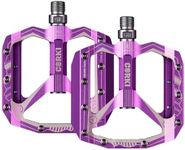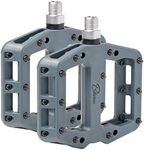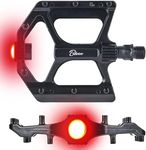Buying Guide for the Best Clipless Pedals
Choosing the right clipless pedals for your bike can significantly enhance your cycling experience. Clipless pedals provide a secure connection between your foot and the pedal, improving power transfer, efficiency, and control. When selecting clipless pedals, it's important to consider various specifications to ensure they meet your riding style and needs. Here are the key specs to consider and how to navigate them.Pedal TypeClipless pedals come in different types, primarily road and mountain bike (MTB) pedals. Road pedals are designed for smooth surfaces and offer a larger platform for better power transfer, while MTB pedals are built for off-road conditions and often feature a double-sided entry for easier clipping in and out. Choose road pedals if you primarily ride on paved roads and seek maximum efficiency. Opt for MTB pedals if you ride on varied terrain and need versatility and ease of use.
Cleat CompatibilityCleats are the part that attaches to your shoe and clips into the pedal. Different pedals use different cleat systems, such as SPD, SPD-SL, or Look. It's crucial to ensure that your shoes are compatible with the cleats of the pedals you choose. SPD cleats are common for MTB and offer easy walking, while SPD-SL and Look cleats are typically used for road cycling and provide a larger contact area for better power transfer. Match the cleat system to your riding style and shoe compatibility.
FloatFloat refers to the degree of lateral movement allowed by the cleat when clipped into the pedal. This movement can help reduce stress on your knees by allowing some natural movement. Float is measured in degrees, with common options being 0, 4.5, and 9 degrees. If you have knee issues or prefer more freedom of movement, choose pedals with higher float. If you prefer a more locked-in feel for maximum power transfer, opt for lower or zero float.
WeightThe weight of the pedals can affect your overall bike weight and performance. Lighter pedals can contribute to a more efficient ride, especially for competitive cyclists. Pedal weight can vary significantly, with high-end models being lighter due to the use of advanced materials like carbon fiber or titanium. If you are a competitive cyclist or prioritize performance, consider investing in lighter pedals. For casual riders, the weight may be less critical.
Durability and MaintenanceDurability and ease of maintenance are important factors, especially if you ride frequently or in harsh conditions. Pedals made from high-quality materials like stainless steel or aluminum tend to be more durable. Additionally, some pedals have sealed bearings that require less maintenance. If you ride in wet or muddy conditions, look for pedals that are known for their durability and ease of maintenance to ensure long-lasting performance.
AdjustabilitySome clipless pedals offer adjustable tension settings, allowing you to customize the force required to clip in and out. This can be particularly useful for beginners who may prefer a lighter setting for easier entry and exit. More experienced riders might prefer a higher tension for a more secure connection. Consider your skill level and comfort with clipless pedals when choosing the adjustability features that best suit your needs.
